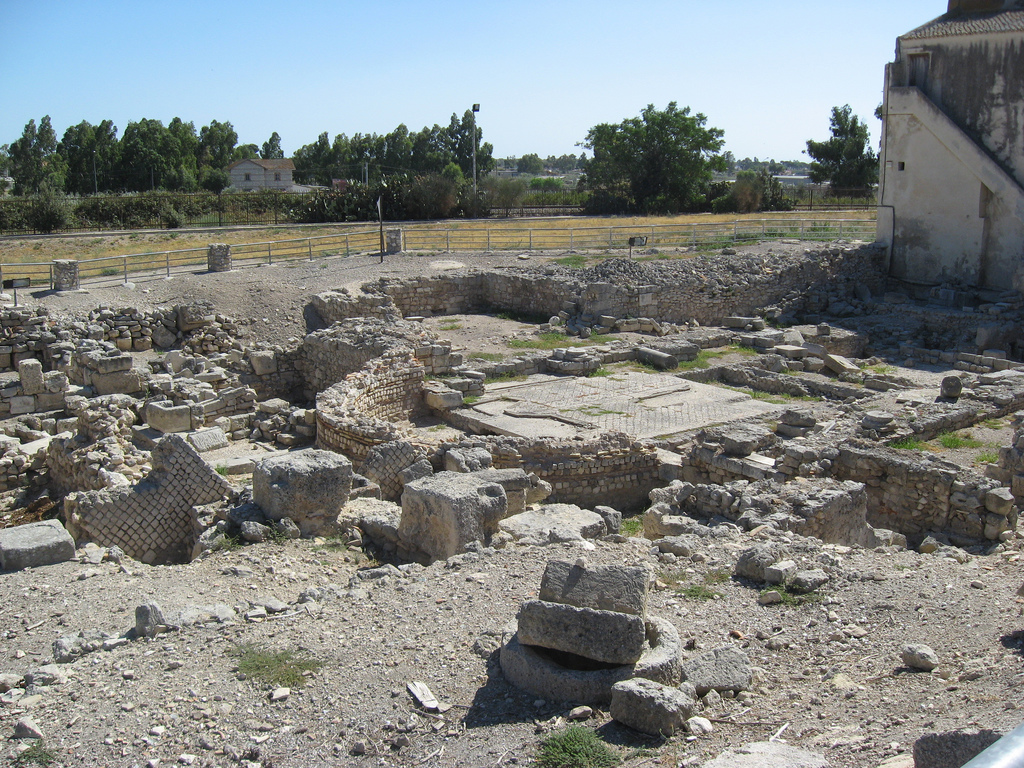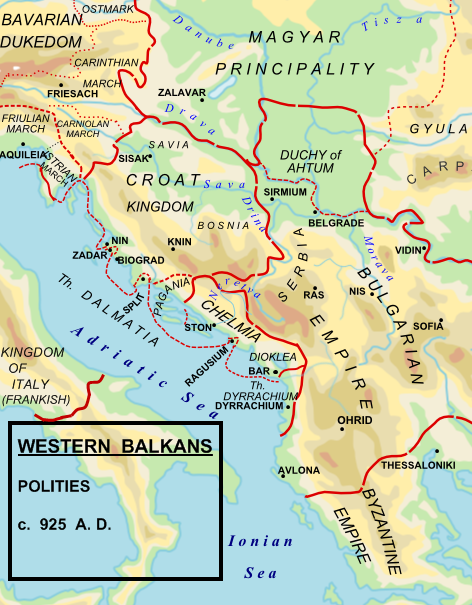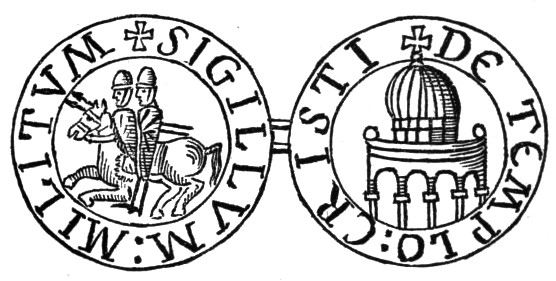|
Siponto
Siponto (, ) was an ancient port town and bishopric of Magna Graecia in Apulia, southern Italy. The town was abandoned after earthquakes in the 13th century; today the area is administered as a ''frazione'' of the ''comune'' of Manfredonia, in the province of Foggia. Siponto is located around 3 km south of Manfredonia. History According to ancient Greek mythology, mythological writings, Sipontum was founded by Diomedes, product of the union of the Homeric Diomedes, hero of the same name with the daughter of the king of the Daunians. In reality, it is believed that Siponto was founded by the Daunians, an Iapygian tribe that inhabited northern Apulia in classical antiquity. After falling into the hands of the Samnites, it was taken in about 335 BC by King Alexander of Epirus, uncle of Alexander the Great. In 189 BC it became a Roman Republic, Roman colony with the name ''Sipontum''. The name ''Sipious'' was used in Byzantine times. In 663 AD it was taken and destroyed by th ... [...More Info...] [...Related Items...] OR: [Wikipedia] [Google] [Baidu] |
Manfredonia
Manfredonia () is a town and Comune, commune of Apulia, Italy, in the province of Foggia, from which it is northeast by rail. Manfredonia is situated on the coast, facing east, to the south of Monte Gargano, and gives its name to the Gulf of Manfredonia, gulf to the east of it. its population was 56,932. National Institute of Statistics (Italy), Istat 2011 History  The area of current Manfredonia was settled in ancient times by the Greeks, founded by Diomedes. The flourishing Greek colony, having fallen into the hands of the Samnites, was retaken about 335 BC by King Alexander of Epirus, uncle of Alexand ...
The area of current Manfredonia was settled in ancient times by the Greeks, founded by Diomedes. The flourishing Greek colony, having fallen into the hands of the Samnites, was retaken about 335 BC by King Alexander of Epirus, uncle of Alexand ...
[...More Info...] [...Related Items...] OR: [Wikipedia] [Google] [Baidu] |
Michael Of Zahumlje
Michael of Zahumlje (reign usually dated c. 910–935), also known as Michael Višević (Serbo-Croatian: ''Mihailo Višević'', Serbian Cyrillic: Михаило Вишевић) or rarely as Michael Vuševukčić,Mihanovich, ''The Croatian nation in its struggle for freedom and independence: a symposium'', p. 112 was a semi-independent, or independent Slavic ruler of Zahumlje, in present-day central Herzegovina and southern Croatia, who flourished in the early part of the 10th century. Prince Michael of Zahumlje had a common boundary with the Serbia and probably with the Kingdom of Croatia, but was an ally of Bulgaria. He was nevertheless able to maintain independent rule throughout at least a majority of his reign. Michael came into territorial conflict with Petar of Serbia, who expand his power to the province of Narenta or Pagania, west from the Neretva River. To eliminate the threat, Michael warned his ally, the Bulgarian Tsar Simeon I, about the alliance between Petar and Sy ... [...More Info...] [...Related Items...] OR: [Wikipedia] [Google] [Baidu] |
Daunians
The Daunians () were an Iapygian tribe that inhabited northern Apulia in classical antiquity. Two other Iapygian tribes, the Peucetians and the Messapians, inhabited the central and southern Apulia respectively. Although all three tribes spoke the Messapic language, but had developed separate archaeological cultures by the seventh century BC. The Daunians lived in the Daunia region, which extended from the Daunian Mountains river in the southeast to the Gargano peninsula in the northwest. This region is mostly coincident with the Province of Foggia and part of Province of Barletta-Andria-Trani today. Daunians and Oscans came into contact in northern Daunia and southern Samnite regions. Gradually, parts of northern Daunia became " Oscanized". Name The ethnonym is connected to the name of the wolf, plausibly the totemic animal of this nation. The cult of the wolf was widespread in ancient Italy and was related to the Arcadian mystery cult. ''Daunos'' means wolf, according to ... [...More Info...] [...Related Items...] OR: [Wikipedia] [Google] [Baidu] |
Diomedes
Diomedes (Jones, Daniel; Roach, Peter, James Hartman and Jane Setter, eds. ''Cambridge English Pronouncing Dictionary''. 17th edition. Cambridge UP, 2006.) or Diomede (; ) is a hero in Greek mythology, known for his participation in the Trojan War. He was born to Tydeus and Deipyle and later became King of Argos, Peloponnese, Argos, succeeding his maternal grandfather, Adrastus. In Homer's ''Iliad'' Diomedes is regarded alongside Ajax the Great and Agamemnon, after Achilles, as one of the best warriors of all the Achaeans (Homer), Achaeans in prowess (which is especially made clear in Book 7 of the ''Iliad'' when Ajax the Greater, Diomedes, and Agamemnon are the most wished for by the Achaeans to fight Hector out of nine volunteers, who included Odysseus and Ajax the Lesser). Subsequently, Diomedes founded ten or more Italian cities and, after his death, was worshipped as a divine being under various names in both Italy and Greece. Description In the account of Dares Phrygius ... [...More Info...] [...Related Items...] OR: [Wikipedia] [Google] [Baidu] |
Magna Graecia
Magna Graecia refers to the Greek-speaking areas of southern Italy, encompassing the modern Regions of Italy, Italian regions of Calabria, Apulia, Basilicata, Campania, and Sicily. These regions were Greek colonisation, extensively settled by Greeks beginning in the 8th century BC. Initially founded by their ''metropoleis'' (mother cities), the settlements evolved into independent and powerful Greek city-states (''poleis''). The settlers brought with them Ancient Greece, Hellenic civilization, which over time developed distinct local forms due to both their distance from Greece and the influence of the indigenous peoples of southern Italy. This interaction left a lasting imprint on Italy, including on Ancient Rome, Roman culture. The Greek settlers also influenced native groups such as the Sicels and the Oenotrians, many of whom adopted Greek culture and became Hellenization, Hellenized. In areas like architecture and urban planning, the colonies sometimes surpassed the achievem ... [...More Info...] [...Related Items...] OR: [Wikipedia] [Google] [Baidu] |
Alexander Of Epirus
Alexander I of Epirus (; c. 370 BC – 331 BC), also known as Alexander Molossus (), was a king of Epirus (343/2–331 BC) of the Aeacid dynasty.Ellis, J. R., ''Philip II and Macedonian Imperialism'', Thames and Hudson, 1976, pp. 90–1, 156–7 As the son of Neoptolemus I and brother of Olympias, Alexander I was an uncle, and a brother-in-law, of Alexander the Great. He was also an uncle to Pyrrhus of Epirus. Biography Neoptolemus I ruled jointly with his brother Arybbas. When Neoptolemus died in c. 357 BC, his son Alexander was only a child and Arrybas became the sole king. In c. 350 BC, Alexander was brought to the court of Philip II of Macedon in order to protect him. In 343/2 in his late 20s, Philip made him king of Epirus, after dethroning his uncle Arybbas. When Olympias was repudiated by her husband in 337 BC, she went to her brother, and endeavoured to induce him to make war on Philip. Alexander, however, declined the contest, and formed a second alli ... [...More Info...] [...Related Items...] OR: [Wikipedia] [Google] [Baidu] |
Griko
Griko (endonym: /), sometimes spelled Grico, is one of the two dialects of Italiot Greek (the other being Calabrian Greek or ), spoken by Griko people in Salento, province of Lecce, Italy. Some Greek linguists consider it to be a Modern Greek dialect and often call it () or (). Griko and Standard Modern Greek are partially mutually intelligible. Classification The most popular hypothesis on the origin of Griko is the one by Gerhard Rohlfs and Georgios Hatzidakis, that Griko's roots go as far back in history as the time of the ancient Greek colonies in Southern Italy and Sicily in the eighth century BC. The Southern Italian dialect is thus considered to be the last living trace of the Greek elements that once formed Magna Graecia. There are, however, competing hypotheses according to which Griko may have preserved some Doric elements, but its structure is otherwise mostly based on Koine Greek, like almost all other Modern Greek dialects. Thus, Griko should rather be de ... [...More Info...] [...Related Items...] OR: [Wikipedia] [Google] [Baidu] |
Tomislav Of Croatia
Tomislav (, ) was the first king of Croatia. He became Duke of Croatia and was crowned king in 925, reigning until 928. During Tomislav's rule, Croatia forged an alliance with the Byzantine Empire against First Bulgarian Empire, Bulgaria. Croatia's struggles with the First Bulgarian Empire eventually led to war, which culminated in the decisive Battle of the Bosnian Highlands in 926. In the north, Croatia often clashed with the Principality of Hungary; the state retained its borders and, to some extent, expanded with the disintegrated Slavs in Lower Pannonia#Principality, Lower Pannonia. Tomislav attended the 925 Councils of Split, Council of Split, convened by Pope John X, to discuss the use of Slavic languages in liturgy, and ecclesiastical jurisdiction over both Croatia and the Byzantine Theme of Dalmatia. Although the Pope sought to prohibit Slavic liturgy, the council did not agree. Jurisdiction over the region was given to the Archbishop of Split instead of Bishop Gregory o ... [...More Info...] [...Related Items...] OR: [Wikipedia] [Google] [Baidu] |
Croatian Navy
The Croatian Navy (HRM; ) is the naval force branch of the Croatian Armed Forces. It was formed in 1991 from what Croatian forces managed to capture from the Yugoslav Navy during the breakup of Yugoslavia and Croatian War of Independence. In addition to mobile coastal missile launchers, today it operates 30 vessels, divided into the Navy Flotilla for traditional naval duties, and the Croatian Coast Guard. Five missile boats form the Croatian fleet's main offensive capability. History Origins Since the ninth century, the Duchy of Croatia (later Kingdom) engaged in naval battles, struggling to maintain control over the eastern Adriatic coast and Adriatic merchant routes. Commemorating the first recorded Croat naval victory, when the subjects of Croatian duke Branimir defeated the Venetian naval expedition on September 18, 887, the Croatian Navy Day is celebrated yearly on September 18. Croatian fleet was particularly active under duke Domagoj and king Petar Krešimir IV. ... [...More Info...] [...Related Items...] OR: [Wikipedia] [Google] [Baidu] |
Saracen
upright 1.5, Late 15th-century German woodcut depicting Saracens ''Saracen'' ( ) was a term used both in Greek and Latin writings between the 5th and 15th centuries to refer to the people who lived in and near what was designated by the Romans as Arabia Petraea and Arabia Deserta. The term's meaning evolved during its history of usage. During the Early Middle Ages, the term came to be associated with the tribes of Arabia. The oldest known source mentioning "Saracens" in relation to Islam dates back to the 7th century, in the Greek-language Christian tract '' Doctrina Jacobi''. Among other major events, the tract discusses the Muslim conquest of the Levant, which occurred after the rise of the Rashidun Caliphate following the death of the Islamic prophet Muhammad. The Roman Catholic Church and European Christian leaders used the term during the Middle Ages to refer to Muslims. By the 12th century, "Saracen" developed various overlapping definitions, generally conflatin ... [...More Info...] [...Related Items...] OR: [Wikipedia] [Google] [Baidu] |
Hospitalier Order
The Order of Knights of the Hospital of Saint John of Jerusalem, commonly known as the Knights Hospitaller (), is a Catholic military order. It was founded in the crusader Kingdom of Jerusalem in the 12th century and had headquarters there until 1291, thereafter being based in Kolossi Castle in Cyprus (1302–1310), the island of Rhodes (1310–1522), Malta (1530–1798), and Saint Petersburg (1799–1801). The Hospitallers arose in the early 12th century at the height of the Cluniac movement, a reformist movement within the Benedictine monastic order that sought to strengthen religious devotion and charity for the poor. Earlier in the 11th century, merchants from Amalfi founded a hospital in Jerusalem dedicated to John the Baptist where Benedictine monks cared for sick, poor, or injured Christian pilgrims to the Holy Land. Blessed Gerard, a lay brother of the Benedictine order, became its head when it was established. After the Christian conquest of Jerusalem in 1099 d ... [...More Info...] [...Related Items...] OR: [Wikipedia] [Google] [Baidu] |
Knight Templar
The Poor Fellow-Soldiers of Christ and of the Temple of Solomon, mainly known as the Knights Templar, was a Military order (religious society), military order of the Catholic Church, Catholic faith, and one of the most important military orders in Western Christianity. They were founded in 1118 to defend pilgrims on their way to Jerusalem, with their headquarters located there on the Temple Mount, and existed for nearly two centuries during the Middle Ages. Officially endorsed by the Catholic Church by such decrees as the papal bull ''Omne datum optimum'' of Pope Innocent II, the Templars became a favoured charity throughout Christendom and grew rapidly in membership and power. The Templar knights, in their distinctive white mantle (monastic vesture), mantles with a red Christian cross, cross, were among the most skilled fighting units of the Crusades. They were prominent in Christian finance; non-combatant members of the order, who made up as much as 90% of their members, ma ... [...More Info...] [...Related Items...] OR: [Wikipedia] [Google] [Baidu] |







